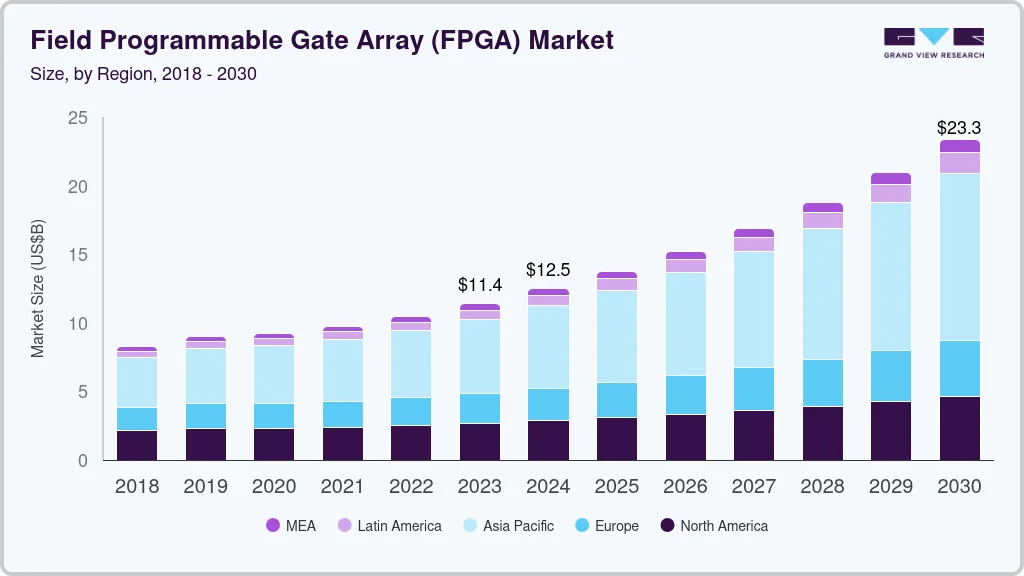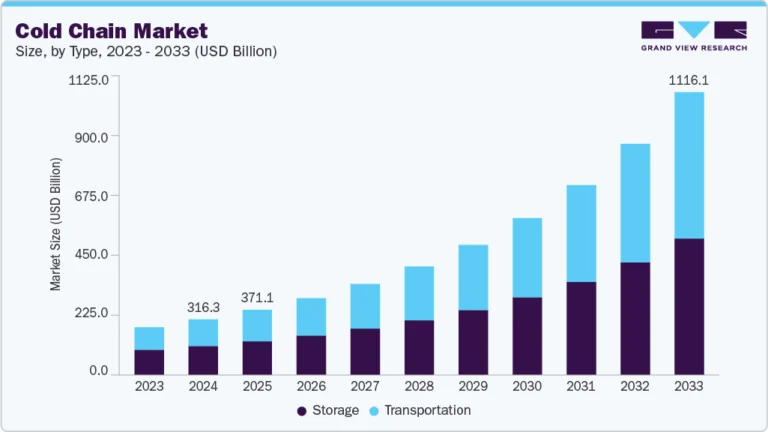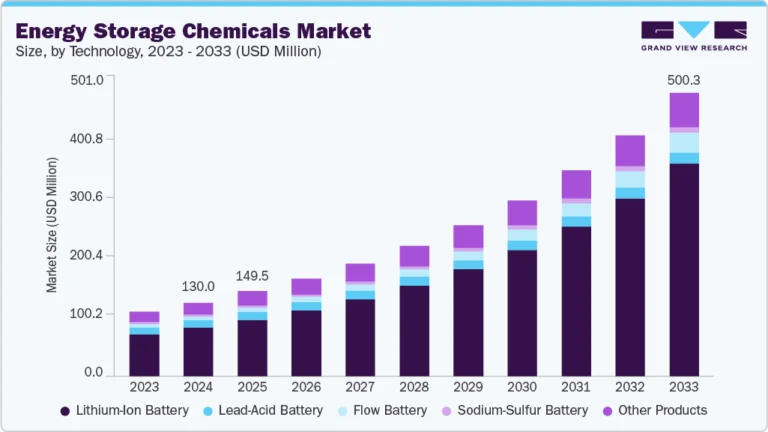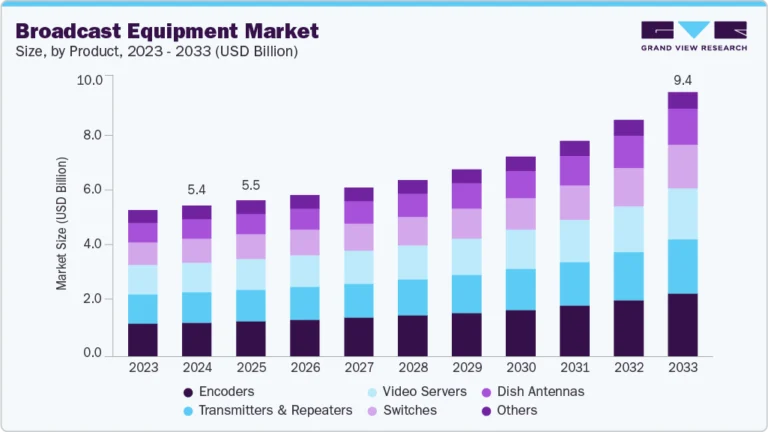Field Programmable Gate Array (FPGA) Market Size, Share & Trends Analysis growing at a CAGR of 10.8% from 2023 to 2030

The global field programmable gate array market size was estimated at USD 10.46 billion in 2022 and is projected to reach USD 726.9 billion by 2030, growing at a CAGR of 10.8% from 2023 to 2030. The growing trend for the adoption of field programmable gate array in areas of deep packet inspection, network processing, and security is anticipated to drive their demand over the forecast period.
Key Market Trends & Insights
- The Asia Pacific region accounted for the highest revenue share of over 46% in 2022.
- The North America regional market captured a revenue share of over 23% in 2022.
- Based on type, the low-end FPGA segment accounted for the largest market share of over 44% in 2022.
- Based on technology, the static random-access memory (SRAM) segment accounted for the largest market share of over 44% in 2022.
Market Size & Forecast
- 2022 Market Size: USD 10.46 Billion
- 2030 Projected Market Size: USD 23.34 Billion
- CAGR (2023-2030): 10.8%
- Asia Pacific: Largest market in 2022
Request a free sample copy or view report summary: https://www.grandviewresearch.com/industry-analysis/fpga-market/request/rs1
The preference for FPGA architecture is on the rise due to its capabilities, such as low power consumption and high compute density. This trend is driven by the increasing demand for efficient data flow and streaming data processing in various applications. For instance, in February 2022, QuickLogic Corporation launched PolarPro 3 to solve the problem of low power FPGA shortages. The product is developed to consume ultra-low power consumption and is ideal for wearables, handheld, and mobile applications. Such product launches by key players are expected to drive the market growth over the forecast period.
Additionally, the rising implementation of FPGAs as an Infrastructure-as-a-Service (IaaS) resource to cloud customers is driving the market growth. Several cloud service providers are deploying field programming gate arrays to enhance their service-oriented tasks such as high-frequency trading, webpage ranking, memory caching, deep learning, network encryption, and video conversion. For instance, Amazon.com, Inc. uses field programmable gate arrays coprocessor in the EC2 F1 virtual machine for customer hardware accelerations as it helps in solving complex engineering, science, and business problems that requires enhanced networking, high bandwidth, and very high compute capabilities. Such type of initiatives by market players are expected to drive the field programmable gate array market during the forecast period.





